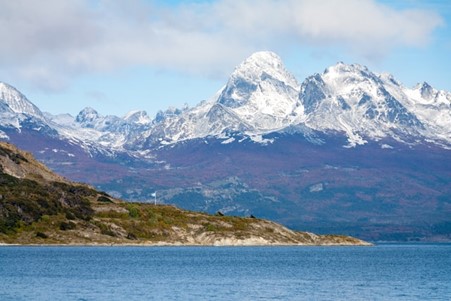Brian McPeek is an avid hiker and guide from Austin, TX. In this article Brian McPeek discusses what may be one of the world’s ultimate hiking destinations for those who like extremes and incredible natural beauty.
Tired of the humdrum life of suburbia and city living? Looking to escape to a far-off land renowned for its natural beauty, rugged terrain, and seemingly endless adventure? Brian McPeek says hiking in nature conservancy of Tierra del Fuego offers the brave-hearted a chance to explore glaciers, mountains, and indigenous communities, all positioned at the bottom of the world.
If that sounds like fun, let’s take a closer look at what hiking this wild landscape has to offer. Brian McPeek explains the range of trails, mountains, and hiking opportunities in the area, as well as some of the more cultural opportunities within the region. Use this guide to start planning your next adventure and set out to see the world!
What You Need to Know About the Region
Brian McPeek explains that Tierra del Fuego, or the ‘Land of Fire’ is an archipelago positioned at the foot of Patagonia, spanning both Chile and Argentina. The majority of the landmass, however, is located within Argentina and this is likely where you’ll start your adventure.
Despite its name, Brian McPeek says Tierra del Fuego is not a warm climate. For the majority of the year, temperatures sit between 35- and 41-degrees Fahrenheit (2 to 5 degrees Celsius). Instead, it gets its name from the large bonfires lit by local indigenous tribes that Ferdinand Magellan spotted while sailing around the continent’s southernmost tip.
Expect a cold and rainy climate during your stay and pack accordingly. The region is highly mountainous and is even home to glaciers so bring raincoats, padding, and multiple layers to stay warm during the cold, nearly arctic nights.
Where to Hike in Tierra del Fuego
The entire nature conservancy spans an area of roughly 240 square miles according to Brian McPeek. With such an expanse to cover, you may be hesitant to embark on such an adventure but rest assured that there are plenty of hikes for all schedules and experience levels. We recommend the following hikes:
- Cerro Guanaco – For a single-day hike, Brian McPeek recommends the Cerro Guanaco hike. Starting from the park information center, the trail loops around Lago Roca before piercing into a forested area. After a steep climb, you’ll break free onto a high rocky outcrop from which you’ll see views of the surrounding mountains, ocean, and Beagle Channel. All in all, plan four hours for such a trip.
- Pampa Alta Trail – If you have a bit more time on your hands but don’t want as challenging of a hike, take the Pampa Alta trail to see views of surrounding waterfalls and the Beagle Channel. The trail is 5 kilometers in length but is fairly easy to hike, thanks to its gradual slope.
- Vinciguerra Glacier – For a true challenge, head to the Vinciguerra Glacier. This large expanse of ice is home to one of the most beautiful lakes you’ll ever see but it’s no easy task getting there. Brian McPeek says this hike is best left to expert adventurers and should only be attempted with a trained guide. Hiking on ice requires special equipment and more skill than a standard hike.
These hikes represent just a small section of what’s available in Tierra del Fuego. For more information, contact the National Park Information Service to get a complete map of the region.
How to Get There
Possibly the most challenging part of the adventure will be getting to the area. As it’s positioned at the most southern tip of South America, Brian McPeek notes Tierra del Fuego is about as far from the United States as you can get.
You’ll first have to fly from the U.S. to Mexico City where you’ll transfer to Buenos Aires. From Buenos Aires, you can then fly directly to Ushuaia, the southernmost city in the world. From Ushuaia, you can then take a bus from the airport to the Tierra del Fuego National Park.
Brian McPeek reports that there are several hotels and lodges dotted around the nature conservancy at Ushuaia, as well as permitted camping grounds within the park. You must pay a small $7 fee to enter the park as well as to use the camping grounds and you are not allowed to pitch a tent outside of these designated areas for safety reasons.
Is it Worth the Trek?
Brian McPeek explains that Tierra del Fuego is one of the most pristine natural environments in the world, prized for its rugged and unforgiving landscape. If you’re looking for an opportunity to experience the so-called ends of the Earth, you won’t find much better than Tierra del Fuego. Though the price of getting there can be steep, the experience you’ll gain is definitely worth the trip.








